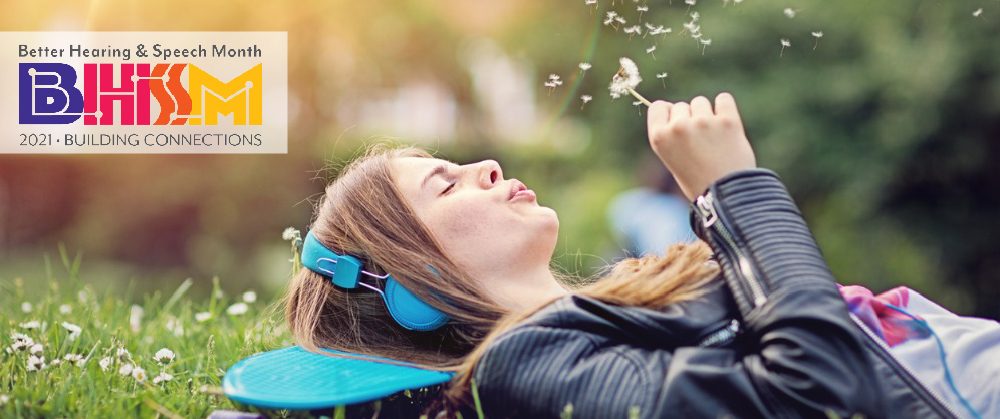Chances are this school year looked different for parents and their children—no matter where they live. With schools letting out for the summer across the United States while physical distancing regulations lift, many parents may be eyeing a “return to normal” this season. With so many distractions during summer break, it’s important that parents remember to take some time out to protect their children’s hearing health.
Safe Listening and Skill Building
During this last week of BHSM, we return to the topic of hearing at home; this week’s theme focuses on children. The American Speech-Language-Hearing Association (ASHA) has provided several important tips for parents during these busy few months, focusing on protecting children’s hearing while providing hands-on learning and off-screen time.
The ASHA Journals articles below focus on hearing loss prevention for children as well as tips for engaging children with hearing loss at home. By sharing these and other resources on childhood hearing protection from ASHA, you can help parents address preventable hearing loss and manage existing hearing loss in children.
Childhood Hearing Loss Prevention at Home
Personal Audio System: Hearing Symptoms, Habits, and Sound Pressure Levels Measured in Real Ear and a Manikin: Letting a child watch their favorite show or listen to music with headphones can make a long car ride or relaxing beach day more manageable, but it’s always important to monitor the device’s sound level. This article shows that listening to music on high intensities (usually in noisy environments) caused adverse hearing symptoms in young adults with normal hearing.
Development of a Hearing Conservation Program for Elementary Schools: This study found that fourth grade students demonstrated knowledge about hearing damage and improved their attitudes about noise exposure. Some of the recommendations discussed in this article may be implemented in the home. Notably, 71% of students said that their parents had never discussed hearing protection with them.
Effects of Parents’ Mealtime Conversation Techniques for Preschool Children With Hearing Loss Who Use Listening and Spoken Language: Many children with hearing loss still learn new vocabulary the same way children without hearing loss do. This study looked at parents’ conversation techniques with their children over a 20-minute mealtime, finding a great deal of variability. Authors suggest that specific coaching for these parents may help introduce and elicit new vocabulary from their children.
Having a Great (and Safe) Summer
BHSM is a great start, but we know that spreading the word about the life-changing services provided by audiologists and SLPs can happen year round! We hope that these resources have been useful in helping ASHA spread the word during BHSM. If you missed any of our previous posts celebrating BHSM, you can check them out below.
#BHSM: What the Pandemic Has Taught Us About Hearing at Home







